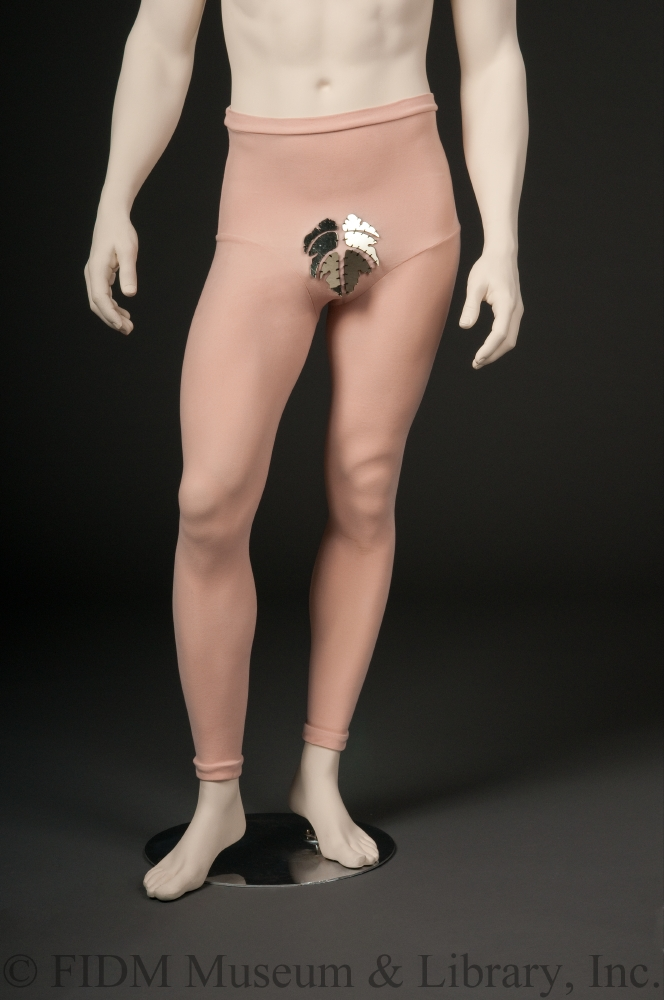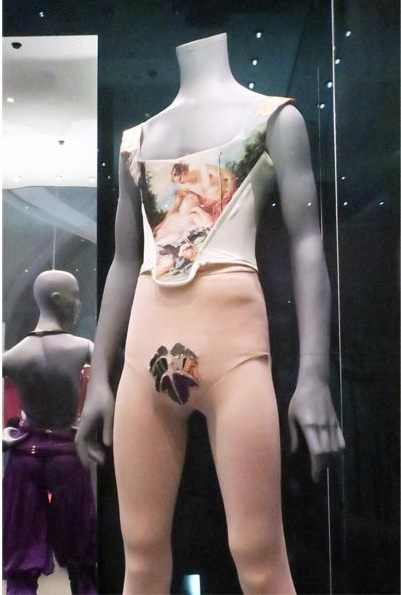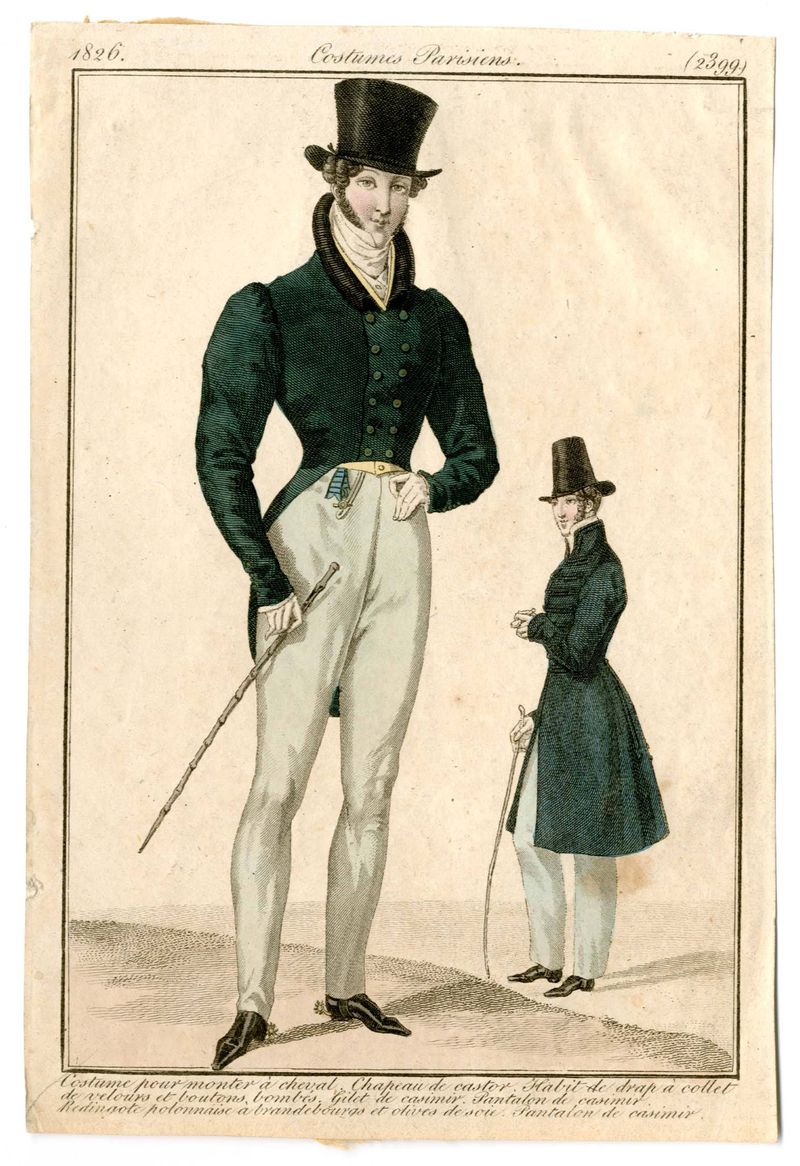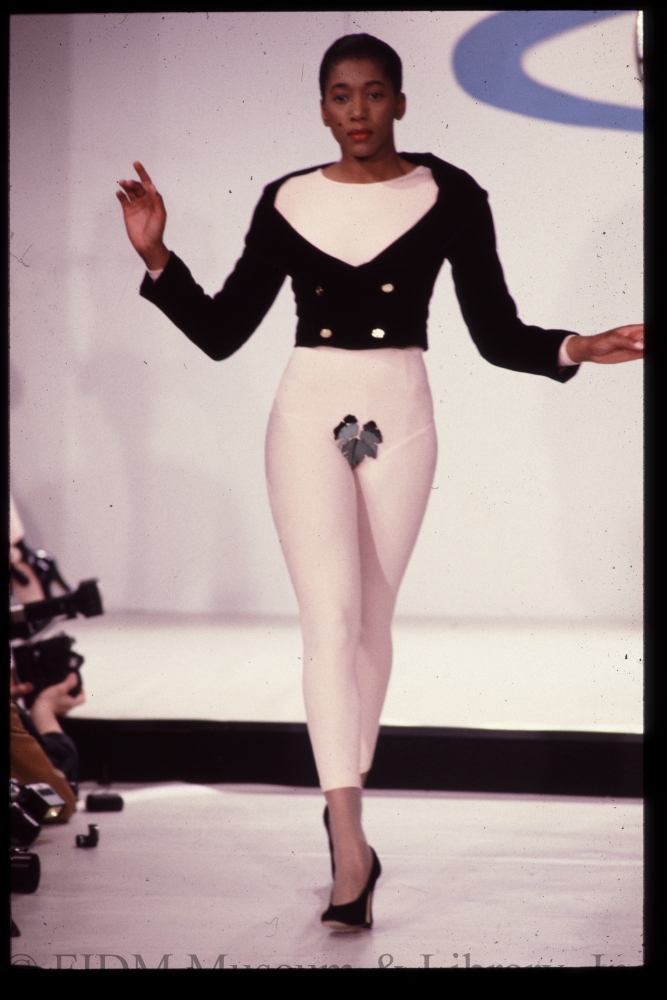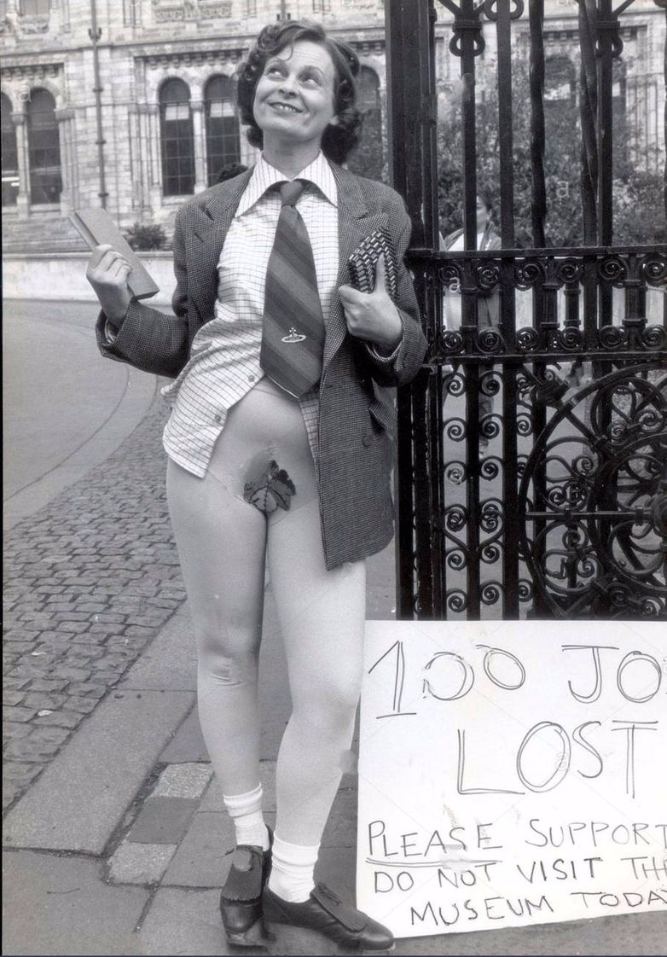At the FIDM Museum, we’re delighted to showcase our objects in exhibitions both locally and abroad. We’ve talked about our participation in Reigning Men at LACMA and Oscar de la Renta at the de Young Museum, and last month one of our pieces joined Undressed: A Brief History of Underwear, currently on display at the Victoria & Albert Museum in London. The exhibition explores both the utilitarian and seductive purposes of underwear – how these garments shape the body and relate to the fashionable silhouette. Our Museum sent an object that combines elements of historicism, religion, satire, and sexuality in its relatively simple design, creating a bold and shocking garment that could only belong to one woman: Vivienne Westwood.
Vivienne Westwood
AW 1989-90
2003.5.13
Westwood’s devoted fan base knows that the British designer is no stranger to controversy. She was a key player in London’s burgeoning punk scene in the 1970s; her infamous boutique on King’s Road sold irreverent counter-culture clothing that represented the punk movement’s anti-authority missive. Political activism inherently became part of Westwood’s design aesthetic. In these early years, she turned to the past for inspiration, as she would throughout her career, incorporating the look of Teddy Boys and the 1950s music scene into her punk-rock designs. Her first runway collections in the 1980s were also heavily influenced by historic themes, from pirates and witches to corsets and cage crinolines.
Vivienne Westwood leggings on display at the V&A; picture via Style Bubble
These nude velour leggings with a strategically-placed green glass fig leaf belong to Westwood’s ‘Britain Must Go Pagan’ era, five collections that mixed elements from ancient Greece with classic British tailoring. Westwood’s British identity is paramount in all of her designs; in her words, “Englishness is vital to what I do. It’s about cut, it’s about irony and it’s about risk-taking.”[1] Westwood had already experimented with wool suiting and riding habits in her AW 1987-88 Harris Tweed collection, and pushed the boundaries of this aesthetic for Britain Must Go Pagan. She looked to the Regency period’s overt sexuality in dress, a direct inspiration from ancient civilization. Westwood studied the work of fashion historian Anne Hollander for her neo-classical collections, who explains that early nineteenth-century menswear showcased the “physical desirability”[2] of a man with tight-fitting, pale pants that reflected the striking sensuality of classical statuary.
French Fashion Plate, 1826
Metropolitan Museum of Art
Gift of Woodman Thompson
Photograph by Michel Arnaud of Vivienne Westwood AW 1989-90
FIDM Museum Special Collections
In her AW 1989-90 Voyage to Cythera collection, Westwood took her Regency look a step further by adding the glass fig leaf, a nod to Adam and Eve, morality, and sexual shame. She remembers, “When I first did the fig leaf in 1989, I just kept screaming. It was so porno and so hilariously mad. Then I got used to it, and I think it looks so elegant and ironic.”[3] She paired the fig leaf leggings with tailored English jackets; she wanted to portray a post-coitus man who had forgotten his trousers.[4] The shocking ensemble was noted in the season’s runway reviews with varying levels of amusement, surprise, disapproval. One writer stated that for Vivienne Westwood, “vulgarity is a way of life,”[5] and another exclaimed, “The outfits would be alarming at a private party, let alone on a city street.”[6] The latter sentiment touches on another theme explored by Westwood and her peers in the 1980s: underwear as outerwear, a challenge to conventional notions of sexuality and gender. Westwood took the trend to the streets when she famously donned the fig leaf leggings for a 1990 protest at the Natural History Museum.
Photograph from Vivienne Westwood: Fashion, Perversity and the Sixties Laid Bare by Fred Vermorel.
As a forerunner of the Punk movement, Vivienne Westwood has always been adept at using fashion to spark controversy and conversation. She continues to both honor and parody her British heritage on the runways and off with her passionate political statements, protests, and activism. If you are in London this summer, stop by the V&A to see our leggings – and make sure to share your thoughts on the exhibition with us!
[1] Vivienne Westwood and Ian Kelly, Vivienne Westwood (London: Pan Macmillion, 2014), 296.
[2] Anne Hollander, Sex & Suits: The Evolution of Modern Dress (New York: Alfred A. Knopf, 1994), 99.
[3] Vivienne Westwood quoted by Claire Wilcox, Vivienne Westwood (London: V&A Publication, 2004), 22.
[4] Vivienne Westwood and Ian Kelly, Vivienne Westwood (London: Pan Macmillion, 2014), 296.
[5] Marylou Luther, “London’s Arabian Delights,” The New York Times, March 13, 1898, B1.
[6] Bernadine Morris, “In London Shows, Some Winners Amid the Chaos,” The New York Times, March 14, 1989, B9.

